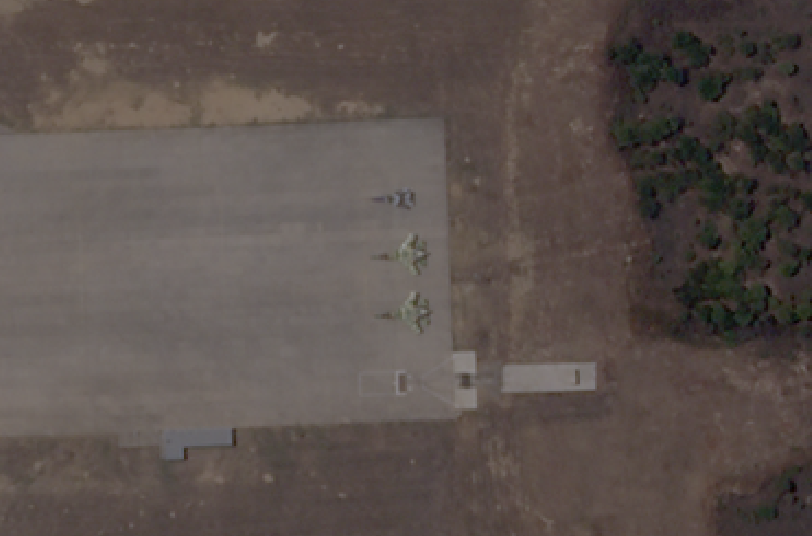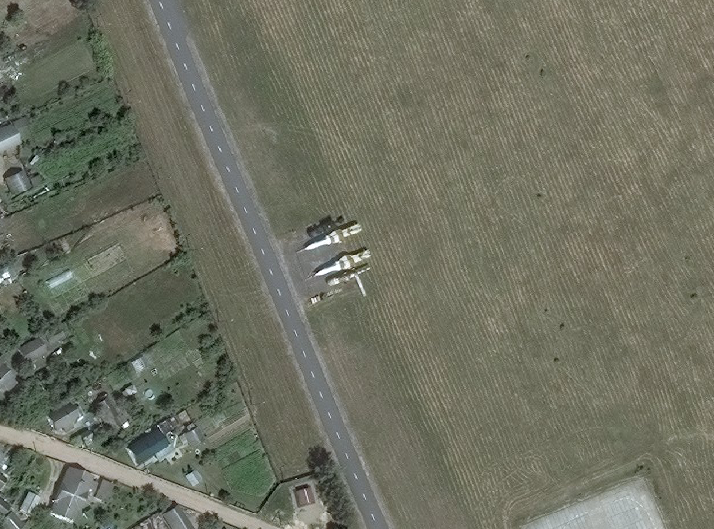Russia’s SU-27 Probably Departed Belarus

DigitalGlobe imagery from June 2016 shows the departure of Russia’s SU-27SM from Baranovichi. (DigitalGlobe)
The Russian Air Force appears to have recalled their Su-27SM from Belarus, a review of satellite imagery of the 61st Fighter Airbase in Baranovichi suggests.
Russia had 4 Su-27SM Flanker parked in revetments on the Quick Reaction Alert apron since December 2013. The multi-role fighters originally deployed as part of an advanced element that would eventually form a full forward deployed squadron.
Space snapshots acquired between May and September have not shown the return of the aircraft to the apron. A review of other active and reserve airfields also indicate they were not redeployed within the country.
Although no official reporting has mentioned the relocation, their absence may be a further sign that Belarusian President Alexander Lukashenko managed to quell Russian plans for an airbase on the territory.
Further yet, Belarus may have even found a way to get new equipment to support the declining air defence arm. Earlier in February, the country signed a deal with Irkut to procure new Su-30SM fighters, despite lacking funds for the purchase. Details regarding their potential sale were not made public.
The SU-30SM are expected to replace Belarus’ ageing MIG-29 of which 10 were recently refurbished by the 558th Aircraft Repair Plant. Five of the aircraft were recently pulling QRA duty with the Russian fighters. Kazakhstan also took delivery of four SU-30SM fighters from Russia last year.
Looking Ahead
Expectations going forward remain murky. Russia’s move to support separatists in Ukraine has created additional unease in Minsk. As a result, Lukashenko’s loyalty doesn’t appear to be what it once was. A battered economy highly exposed to Russian sanctions has pushed Eastern Europe’s last strongman to consider further Western style reforms.
Between 19 September – 01 October, Belarus is hosting another IMF mission in the attempts to secure a $3 billion loan. The Washington-based organization is hoping to push for greater structural changes which, inter alia, include increasing the role of private companies and reducing that of state owned enterprises.
Nevertheless, we can’t count Russia out just yet. Despite a growing divide, Moscow’s ability to help re-arm the Belarusian military through either hefty subsidies or donated materials remains an important bargaining chip to bring the country back into the fold. In addition to the SU-30SM, the country recently took delivery of former VKO-operated S-300. Imagery already shows the units actively deployed to Belarusian border regions.
But it’s not just the carrot to watch for. Russia also has other levers to influence Belarus’ decisions and further promote its own interests. The supply and subsidy of Russian oil and gas, for example, is a tried and true measure that highly affects Belarus’ GDP growth. Q4 oil supplies from Russia were recently announced which put overall oil deliveries to the country at 18 million tons, down from the scheduled 24 million. This year oil cuts alone have accounted for a Belarusian GDP reduction of .03 per cent, according to the Belarusian Prime Minister.
Bottom Line: Russia’s neighbor is economically vulnerable. With Belarus decommissioning a sizable part of its air force — its entire fleet of Su-24s and Su-27s — developments with Russia, air defense and otherwise, remain important to watch.


